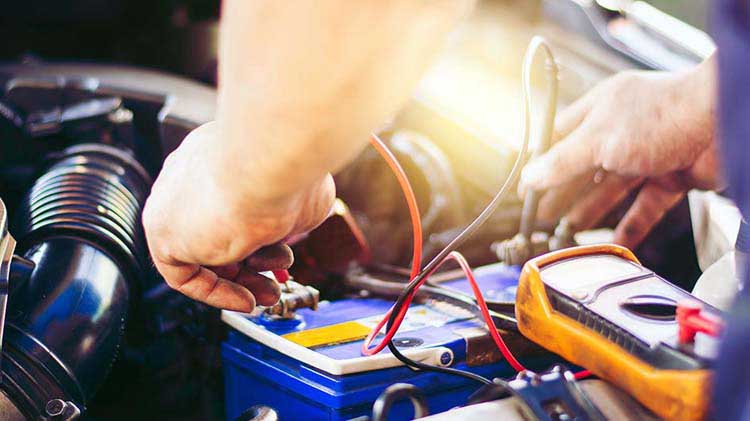통신 장비용 리튬 배터리 기술의 발전
In today’s fast-paced and interconnected world, communication equipment plays a vital role in keeping people connected. Whether it is a mobile phone, laptop, or any other portable device, the battery is the lifeline that powers these devices. Over the years, significant advancements have been made in lithium battery technology, revolutionizing the way we communicate. This article will explore the latest developments in lithium battery technology for communication equipment.
Increased Energy Density:
One of the most significant advancements in lithium battery technology is the increase in energy density. Energy density refers to the amount of energy that can be stored in a battery per unit volume or weight. With higher energy density, communication equipment can operate for longer durations without needing a recharge. This advancement allows users to stay connected for extended periods, especially in situations where access to power outlets is limited.
Longer Battery Life:
Along with increased energy density, lithium battery technology has also led to longer battery life for communication equipment. This means that devices can now operate for more extended periods before requiring a recharge. For instance, smartphones using older battery technology would drain quickly, often needing a recharge within a day. However, with the latest advancements in lithium batteries, smartphones can now last significantly longer, offering users a seamless communication experience.
Faster Charging:
Another significant development in lithium battery technology is faster charging capability. Older battery technologies would take several hours to fully charge a device. However, with advancements in lithium battery technology, charging times have been substantially reduced. The introduction of fast-charging technologies, such as Qualcomm’s Quick Charge and USB Power Delivery, makes it possible to charge communication equipment rapidly, ensuring that users can stay connected without lengthy downtime.
Improved Safety:
Safety is a crucial aspect of any battery technology. Lithium batteries have received criticism in the past due to safety concerns, such as the risk of overheating, explosion, or fire. However, with advancements in lithium battery technology, significant improvements have been made to enhance safety. Manufacturers now incorporate advanced safety features, such as thermal management systems and overcharge protection, to mitigate any potential risks. These advancements have made lithium batteries safer and more reliable for use in communication equipment.
Environmental Friendliness:
Environmental sustainability is a growing concern globally. In response to this, advancements in lithium battery technology have focused on enhancing environmental friendliness. Manufacturers are now developing lithium batteries with reduced environmental impact throughout their life cycle. This includes using eco-friendly materials, improving recyclability, and reducing the overall carbon footprint of the batteries. These developments align with the increasing demand for sustainable products, ensuring that communication equipment remains environmentally responsible.
Integration with Renewable Energy Sources:
The integration of lithium battery technology with renewable energy sources is another exciting advancement. As the world transitions towards cleaner and greener energy, communication equipment can benefit from this convergence. Lithium batteries can store surplus energy generated from renewable sources, such as solar panels or wind turbines, and power communication devices when needed. This integration promotes energy efficiency and reduces dependence on traditional energy sources, making communication equipment more sustainable.
결론:
Advancements in lithium battery technology have revolutionized the communication equipment industry. With increased energy density, longer battery life, faster charging, improved safety, environmental friendliness, and integration with renewable energy sources, lithium batteries have become the preferred choice for powering communication devices. These advancements ensure that individuals can stay connected for longer durations, even in challenging environments. As technology continues to evolve, we can expect further improvements in lithium battery technology, enabling a seamless and sustainable communication experience for all.
-
 오늘날 빠르게 변화하는 세상에서 우리는 일상적인 요구를 충족하기 위해 기술에 크게 의존하고 있습니다. 스마트폰부터 노트북까지 우리 주변에는 지속적인 전원이 필요한 장치가 많이 있습니다. 12V LiFePO4 배터리가 작동하는 곳입니다. 이는 효율적이고 신뢰할 수 있는 에너지 요구 사항을 충족하는 강력한 솔루션입니다. LiFePO4 배터리는...더 읽어보세요
오늘날 빠르게 변화하는 세상에서 우리는 일상적인 요구를 충족하기 위해 기술에 크게 의존하고 있습니다. 스마트폰부터 노트북까지 우리 주변에는 지속적인 전원이 필요한 장치가 많이 있습니다. 12V LiFePO4 배터리가 작동하는 곳입니다. 이는 효율적이고 신뢰할 수 있는 에너지 요구 사항을 충족하는 강력한 솔루션입니다. LiFePO4 배터리는...더 읽어보세요 -
 Lithium Iron Phosphate (LiFePO4) batteries are a type of rechargeable battery that have been gaining popularity in recent years. These batteries are known for their high energy density, long life cycle, and safety. As a result, they are commonly used in a variety of applications, including electric vehicles, solar energy storage systems, and portable electronics. One of the main...더 읽어보세요
Lithium Iron Phosphate (LiFePO4) batteries are a type of rechargeable battery that have been gaining popularity in recent years. These batteries are known for their high energy density, long life cycle, and safety. As a result, they are commonly used in a variety of applications, including electric vehicles, solar energy storage systems, and portable electronics. One of the main...더 읽어보세요 -
 Industrial Power Products Batteries: Providing Reliable Energy Solutions for Industrial ApplicationsIn today's rapidly advancing industrial landscape, reliable and efficient energy solutions are essential for maintaining smooth operations. Industrial Power Products Batteries (IPPB) has been at the forefront of providing high-quality power storage solutions for a wide range of industrial applications. With their commitment to innovation, durability, and sustainability, IPPB batteries have become the go-to choice for businesses worldwide. IPPB...더 읽어보세요
Industrial Power Products Batteries: Providing Reliable Energy Solutions for Industrial ApplicationsIn today's rapidly advancing industrial landscape, reliable and efficient energy solutions are essential for maintaining smooth operations. Industrial Power Products Batteries (IPPB) has been at the forefront of providing high-quality power storage solutions for a wide range of industrial applications. With their commitment to innovation, durability, and sustainability, IPPB batteries have become the go-to choice for businesses worldwide. IPPB...더 읽어보세요 -
 Introduction: Golf carts have become a common mode of transportation in golf courses, retirement communities, and even some residential areas. These compact electric vehicles are not only convenient but also environmentally friendly. However, the performance and longevity of a golf cart heavily rely on the quality and maintenance of its battery. In this article, we will explore the importance of...더 읽어보세요
Introduction: Golf carts have become a common mode of transportation in golf courses, retirement communities, and even some residential areas. These compact electric vehicles are not only convenient but also environmentally friendly. However, the performance and longevity of a golf cart heavily rely on the quality and maintenance of its battery. In this article, we will explore the importance of...더 읽어보세요 -
 When it comes to powering our modern day devices and appliances, batteries have become an integral part of our lives. From powering our phones and laptops to supporting renewable energy systems, batteries play a crucial role in our daily lives. However, choosing the right battery can be a daunting task, especially when it comes to high-capacity batteries like 100Ah LiFePO4...더 읽어보세요
When it comes to powering our modern day devices and appliances, batteries have become an integral part of our lives. From powering our phones and laptops to supporting renewable energy systems, batteries play a crucial role in our daily lives. However, choosing the right battery can be a daunting task, especially when it comes to high-capacity batteries like 100Ah LiFePO4...더 읽어보세요 -
 If you are looking for a reliable and long-lasting battery for your power needs, look no further than a 12V LiFePO4 battery. This type of battery is the perfect solution for a wide range of applications, including solar power systems, electric vehicles, backup power systems, and more. In this article, we will take a closer look at the benefits of...더 읽어보세요
If you are looking for a reliable and long-lasting battery for your power needs, look no further than a 12V LiFePO4 battery. This type of battery is the perfect solution for a wide range of applications, including solar power systems, electric vehicles, backup power systems, and more. In this article, we will take a closer look at the benefits of...더 읽어보세요 -
 고용량 배터리의 개발은 자동차, 신재생에너지, 가전제품 등 다양한 산업에 혁명을 일으켰습니다. 이러한 놀라운 혁신 중 하나는 기존 납산 배터리에 비해 향상된 성능을 제공하는 고용량 12V 100Ah LiFePO4(리튬 철 인산염) 배터리입니다. LiFePO4 배터리는 다른 유형에 비해 많은 장점을 제공하는 리튬 이온 배터리 유형입니다. 그들은 그들의 것으로 알려져 있습니다 ...더 읽어보세요
고용량 배터리의 개발은 자동차, 신재생에너지, 가전제품 등 다양한 산업에 혁명을 일으켰습니다. 이러한 놀라운 혁신 중 하나는 기존 납산 배터리에 비해 향상된 성능을 제공하는 고용량 12V 100Ah LiFePO4(리튬 철 인산염) 배터리입니다. LiFePO4 배터리는 다른 유형에 비해 많은 장점을 제공하는 리튬 이온 배터리 유형입니다. 그들은 그들의 것으로 알려져 있습니다 ...더 읽어보세요



